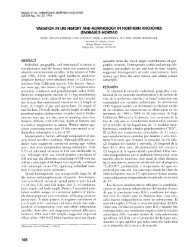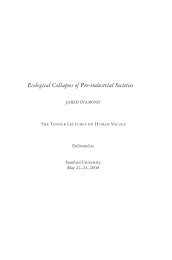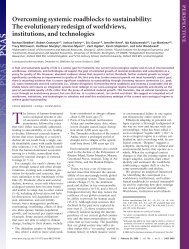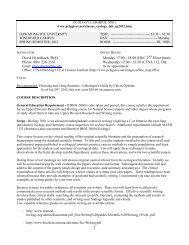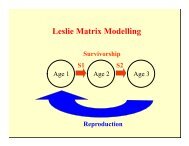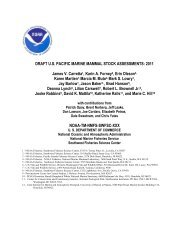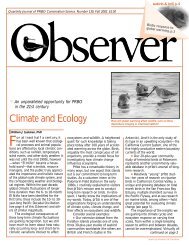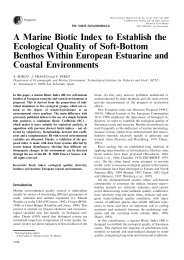A Unique Advantage for Giant Eyes in Giant Squid - Duke Biology ...
A Unique Advantage for Giant Eyes in Giant Squid - Duke Biology ...
A Unique Advantage for Giant Eyes in Giant Squid - Duke Biology ...
You also want an ePaper? Increase the reach of your titles
YUMPU automatically turns print PDFs into web optimized ePapers that Google loves.
Def<strong>in</strong>ition of variables (units <strong>in</strong> brackets)N TN BN bioN spaceN blackX chMean number of real and false photons detected per <strong>in</strong>tegration time <strong>in</strong> a visual channel aimed at thetarget (photons)Mean number of real and false photons detected per <strong>in</strong>tegration time <strong>in</strong> a visual channel view<strong>in</strong>g thebackground space-light (photons)Mean photon count (per <strong>in</strong>tegration time) orig<strong>in</strong>at<strong>in</strong>g from biolum<strong>in</strong>escent sources (photons)Mean photon count (per <strong>in</strong>tegration time) from background space-light (photons)Mean photon count (per <strong>in</strong>tegration time) orig<strong>in</strong>at<strong>in</strong>g from light scattered <strong>in</strong>to the l<strong>in</strong>e of sightbetween target and observer (photons)Number of false photons (dark noise) per <strong>in</strong>tegration time <strong>in</strong> a visual channel (photons)X Dark noise rate per photoreceptor (photons s –1 )ArPupil diameter (m)Range: maximum visibility distance to target (m)E Number of photons emitted by biolum<strong>in</strong>escent po<strong>in</strong>t source <strong>in</strong> all directions per second (photons s –1 )I spaceTxRadiance of space-light background <strong>in</strong> the direction of view at the position (depth) of the eye (photonsm –2 s –1 sr –1 )Width of extended target (m)Average distance between po<strong>in</strong>t sources across an extended object (m)α Beam attenuation coefficient of sea water (m –1 )κ Attenuation coefficient of background radiance (backscatter<strong>in</strong>g coefficient) (m –1 )λWavelength of light, taken as 480 nm <strong>for</strong> biolum<strong>in</strong>escence and transmitted daylightn Refractive <strong>in</strong>dex <strong>in</strong> object and image space, taken as the value <strong>for</strong> water, 1.33d∆tqfMRPhotoreceptor diameter (m)Integration time (s)Detection efficiency: ratio of detected to <strong>in</strong>cident photons, which depends on losses <strong>in</strong> the ocularmedia, the fraction absorbed by photopigment and the transduction efficiencyFocal length (m)Matthiessen’s ratio, 2f/AReliability coefficient



